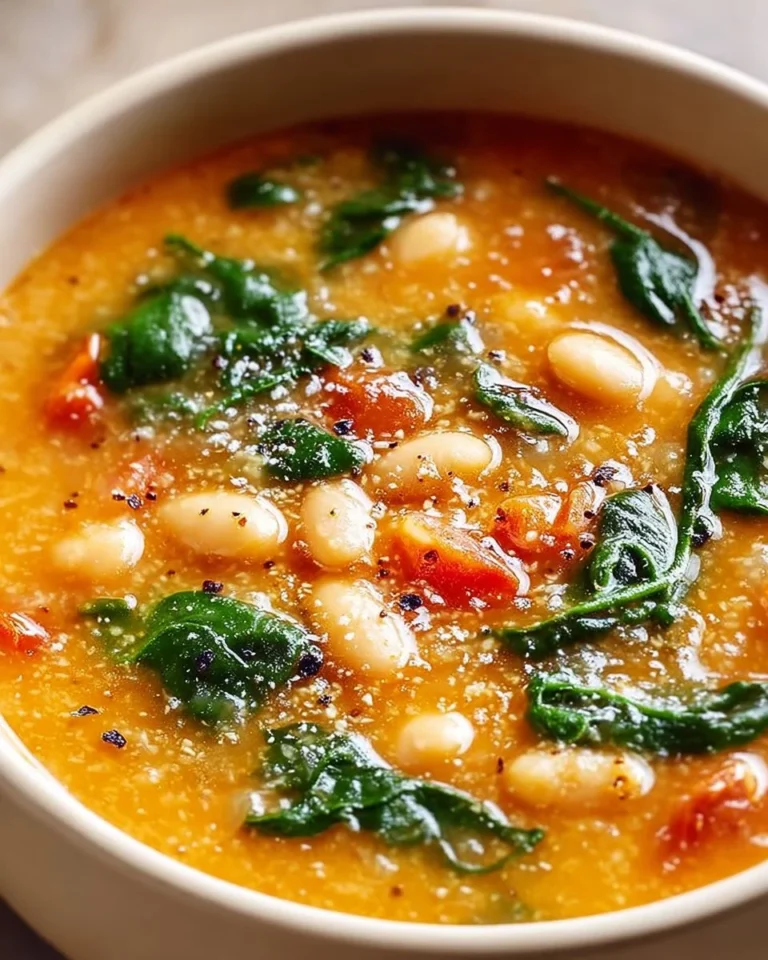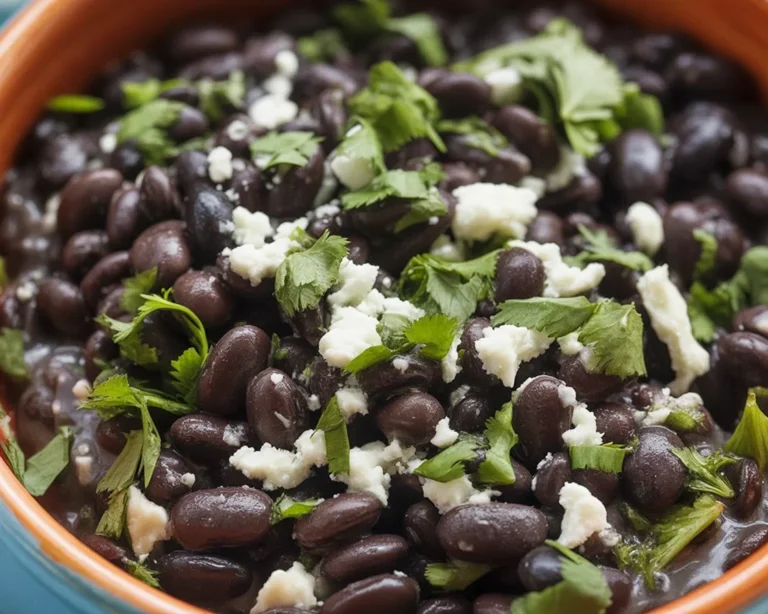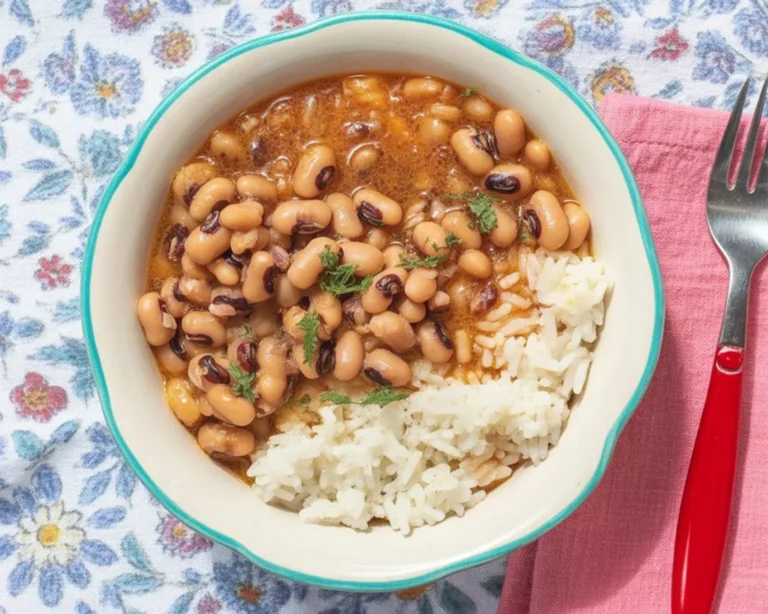black eyed peas recipe is a Southern classic that just seems to show up every New Year’s Day at my grandma’s table. If you’ve ever wondered why everyone’s fussing with beans after the holidays, you’re not alone. Down here, folks think these little peas bring good luck (hey, if it works, I’ll take it). If you’re craving a meal that screams “comfort,” or just need some new ideas besides your usual go-to like this blackberry cobbler recipe or maybe you want to shake things up after your last black pepper chicken night, I’ve got you covered. Let’s talk about these tasty peas, why they matter, how to cook ’em (no fancy gadgets needed), and a few secrets for getting ’em just right. 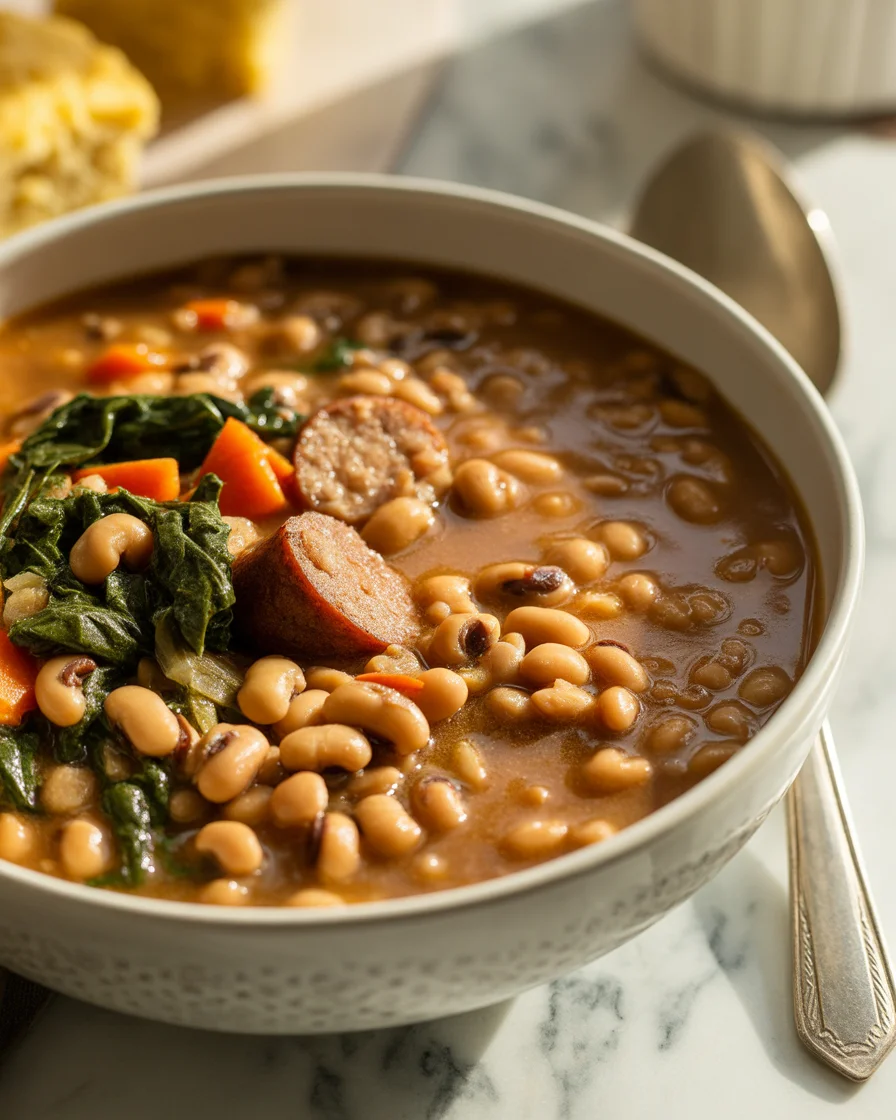
Preparing Southern Black-Eyed Peas for New Year’s Celebrations
Every year, my family makes black eyed peas recipe on January 1st. It’s our stubborn tradition, and my aunt swears you gotta eat a spoonful for each month of good luck (she’s a little intense, but we humor her). Folks say this goes all the way back to Civil War times, and that it’s about more than just luck—it’s a way to start the year fresh and humble.
First things first: it isn’t just about dumping beans in a pot. Nope. We toss in some pork, like a smoked ham hock or a meaty bone left from Christmas dinner. Adds a crazy good depth of flavor. Onions, garlic, and maybe a little chopped celery? You bet. My grandpa used to chase me out of the kitchen if I forgot the spicy kick—so, don’t forget hot sauce.
The fun part? Some people load ’em up with tomatoes or bell peppers, others swear by nothing but beans and meat. Play with it. Your peas, your rules.
“I’ve made a lot of beans in my day, but black eyed peas on New Year’s with the family is something special. Everyone fights for seconds. Every. Time.” — Sheryl R., Mississippi
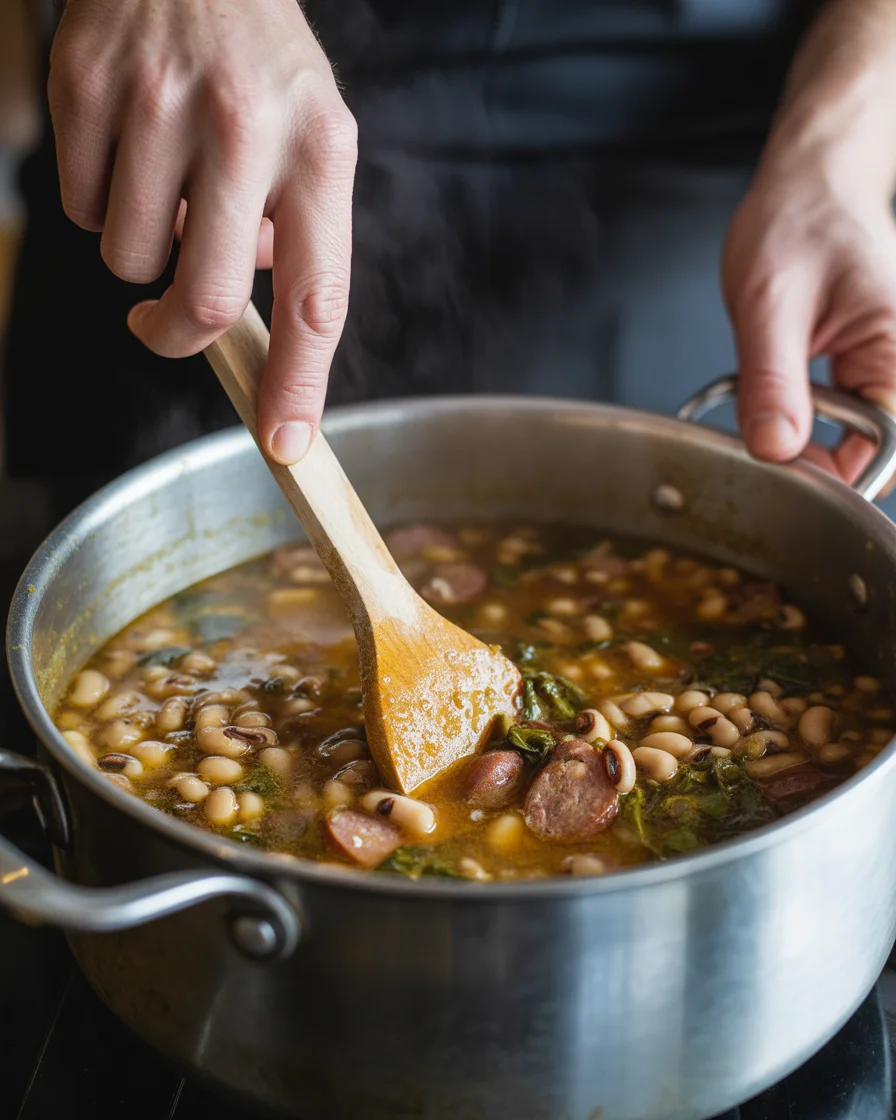
How to Make Black-Eyed Peas: Step-by-Step Instructions
There’s nothing too tricky here, honestly, but let me walk you through how I do it (’cause a black eyed peas recipe done right is unbeatable). Start with a bag of dried peas—about a pound if you’re feeding a crowd, or halve it if you’re just testing things out.
Pour your black eyed peas in a big colander. Fish out any weird bits. Give ’em a rinse (sometimes they’re dusty). Traditional folks soak them overnight, but if you forget, don’t sweat it—you can do a quick soak (literally just boil, let sit, drain, done).
Toss the peas into a big ol’ pot. Cover with water—enough so they’re swimming a couple inches deep. Pitch in that ham hock or a slab of bacon. Throw in diced onion, a few smashed garlic cloves, salt, pepper, maybe a bay leaf if you’re feeling fancy.
Bring it up to a boil, then ease it down to a simmer. Let them bubble for about 1-1.5 hours. Check the water—add a splash more if it starts getting too thick. Taste as you go. Adjust salt. Crank up the pepper. Toss in a little hot sauce at the end for heat (if your folks like it spicy; my crew does).
Pull out the meat bone when it’s soft and falling apart. Strip off the good bits, stir bits back in. That’s it. House will smell amazing. Your neighbors might wander over with bowls.
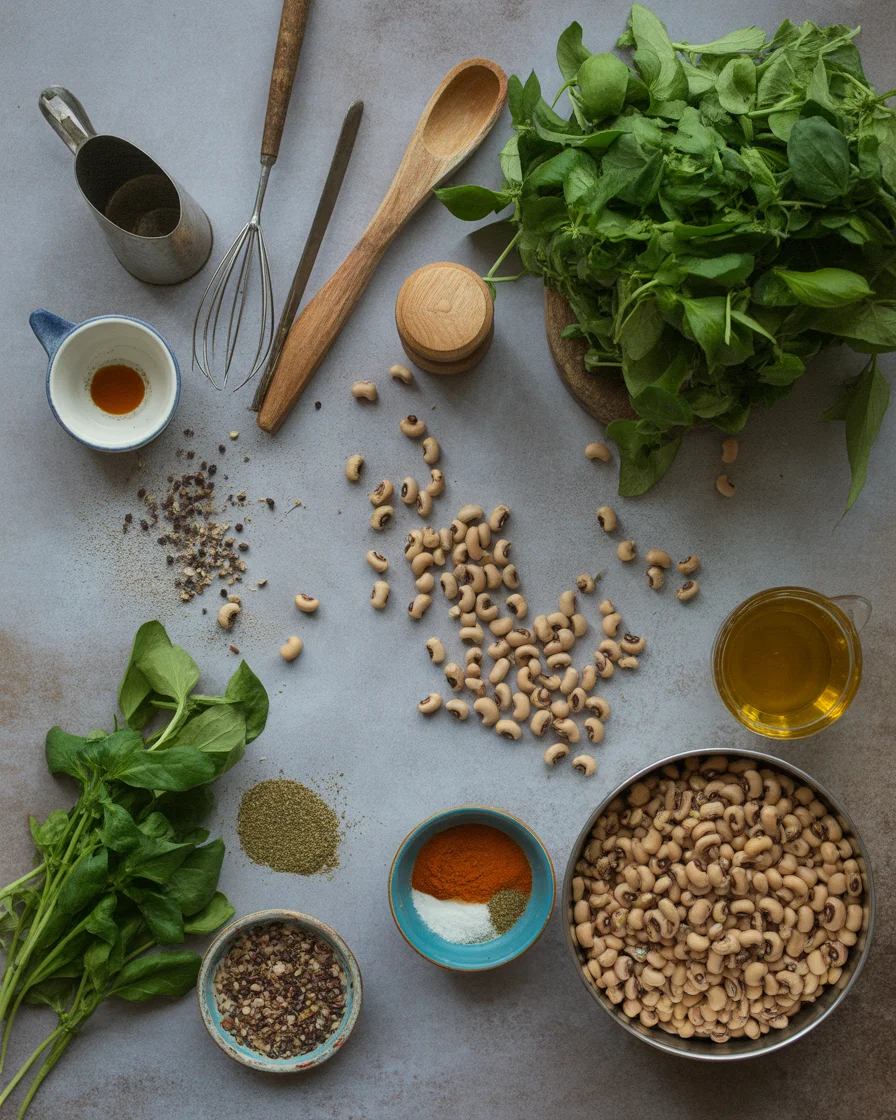
Variations & Flavor Enhancements for Black-Eyed Peas
So, here’s the truth: a good black eyed peas recipe can wear a hundred hats. Some days, I’ll chunk in bell pepper and celery for extra crunch. Other times, I’m feeling fancy and swirl in a few tablespoons of tomato paste or canned diced tomatoes—gives it a slightly tangy, stew-like vibe.
You can make ’em vegetarian—use a smoked paprika or even a splash of liquid smoke for that deep flavor folks expect. Hot Italian sausage works too (if you’re curious about shaking up brunch, try that one). My neighbor puts a pinch of thyme and just a smidge of cayenne in hers. That’ll put hair on your chest, if you believe her.
A little secret from my cousin: finish the pot with a drizzle of vinegar right before serving. It wakes up all the flavors! Experimenting kind of makes it way more fun than you’d think. And when you find your perfect combo? Write it down! Some days my own best batch just slips my mind.
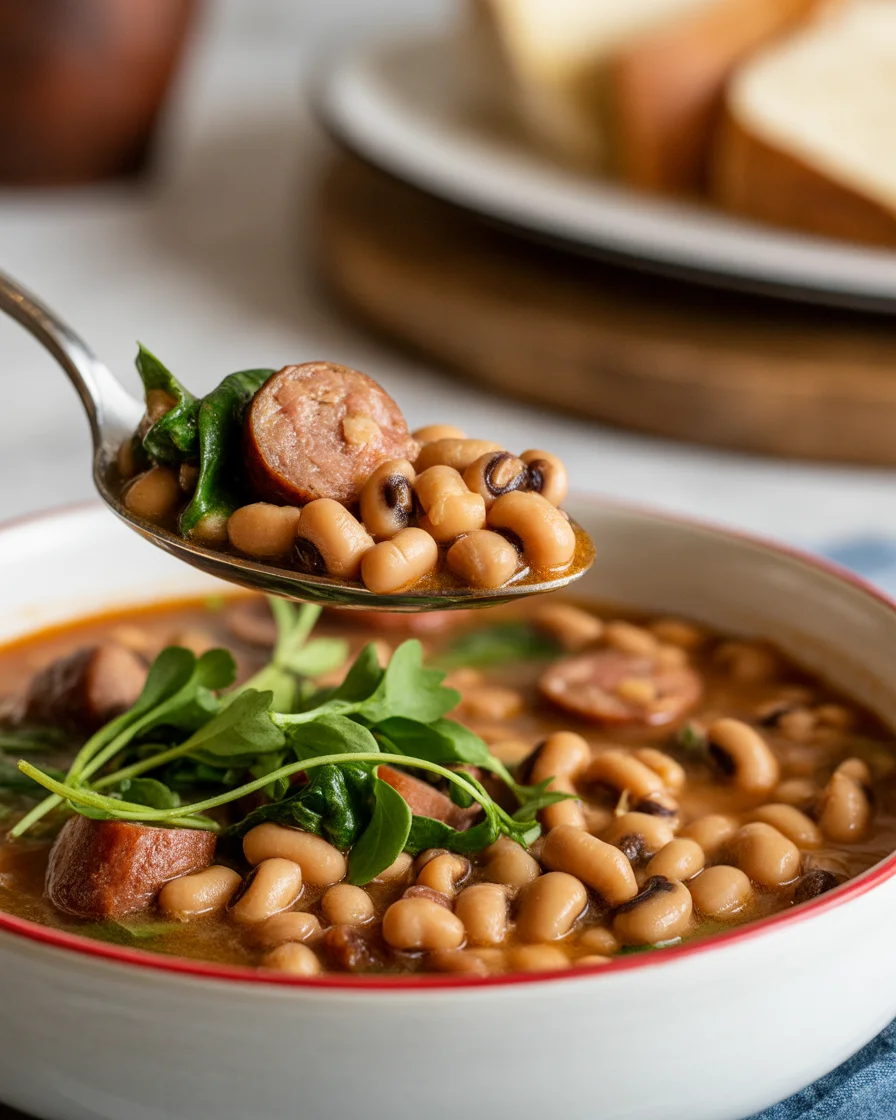
Common Mistakes: Do Black-Eyed Peas Have to Be Soaked First?
Short answer: Not always. Do I soak my black eyed peas recipe every time? Nope. It helps move things along a bit faster, and some folks think it makes ’em easier on your belly. But honestly, if you forget to soak, they’ll still cook—just tack on extra time and keep an eye on water so the pot doesn’t dry out.
Don’t use old peas (fish around in that pantry before you start). Stale ones never get soft, and you’ll just be mad you wasted your Sunday. Also, don’t crank the heat and walk off—they’ll get mushy on the bottom and tough on top. Keep that simmer low and slow, and stir every now and then.
If you add salt early, some say it slows down cooking, but I’ve never noticed a real problem—just don’t dump the whole container in at the start. Salt to taste, y’all.
Recommendations for Serving Southern Black-Eyed Peas with Other Dishes
Alright, you got your black eyed peas recipe bubbling away. Wondering what to serve ’em with? Here are a few can’t-fail combos:
- A big hunk of sweet cornbread (the kind that crumbles when you break it)
- Collard greens cooked down with a little pork fat
- Steamed rice or creamy mashed potatoes
- For dessert, try this easy apple cake recipe or my absolute favorite blackberry crumb bars recipe. Both pair like a charm with Southern main dishes.
Trust me, serve these up and you’ll have folks asking when your next “Southern feast” is happening. Be prepared—they’ll come hungry.
Common Questions
Can I use canned black eyed peas if I’m in a rush?
Sure can. Just rinse and drain them so they don’t taste like the can. Shorten the simmer time since they’re already soft.
What’s the best meat to add for flavor?
Smoke ham hock’s the traditional pick, but bacon, smoked turkey, or sausage totally work too.
Can I freeze leftovers?
Absolutely. Portion them out, freeze, and they’ll reheat perfectly for months. Great for lazy weekday lunches.
Are black eyed peas really lucky, or is that just a thing people say?
If you ask my grandma, eating them on New Year’s brings lots of luck and coins. I can’t guarantee your lottery ticket, but it can’t hurt, right?
Do kids usually like this dish?
If you dial down the heat and maybe serve it with cornbread, yep, even picky eaters usually come back for more.
Give These Peas a Place at Your Table
So, that’s how I do black eyed peas recipe—nothing too fancy, but guaranteed tasty. Cooking traditions aren’t just about the food, right? They’re little time machines back to family tables and wild stories. Once you master the basics, it’s easy to riff on, like those delicious recipes over at Southern Black Eyed Peas Recipe – Immaculate Bites or see how Black-Eyed Peas Recipe | The Hungry Hutch does it with bacon (big fan here). If you’re collecting ideas, Southern Black-Eyed Peas Recipe – Maple Jubilee has another unique spin. Give it a try, improvise a little, and let me know if your batch brings good luck or at least a happy, full belly! 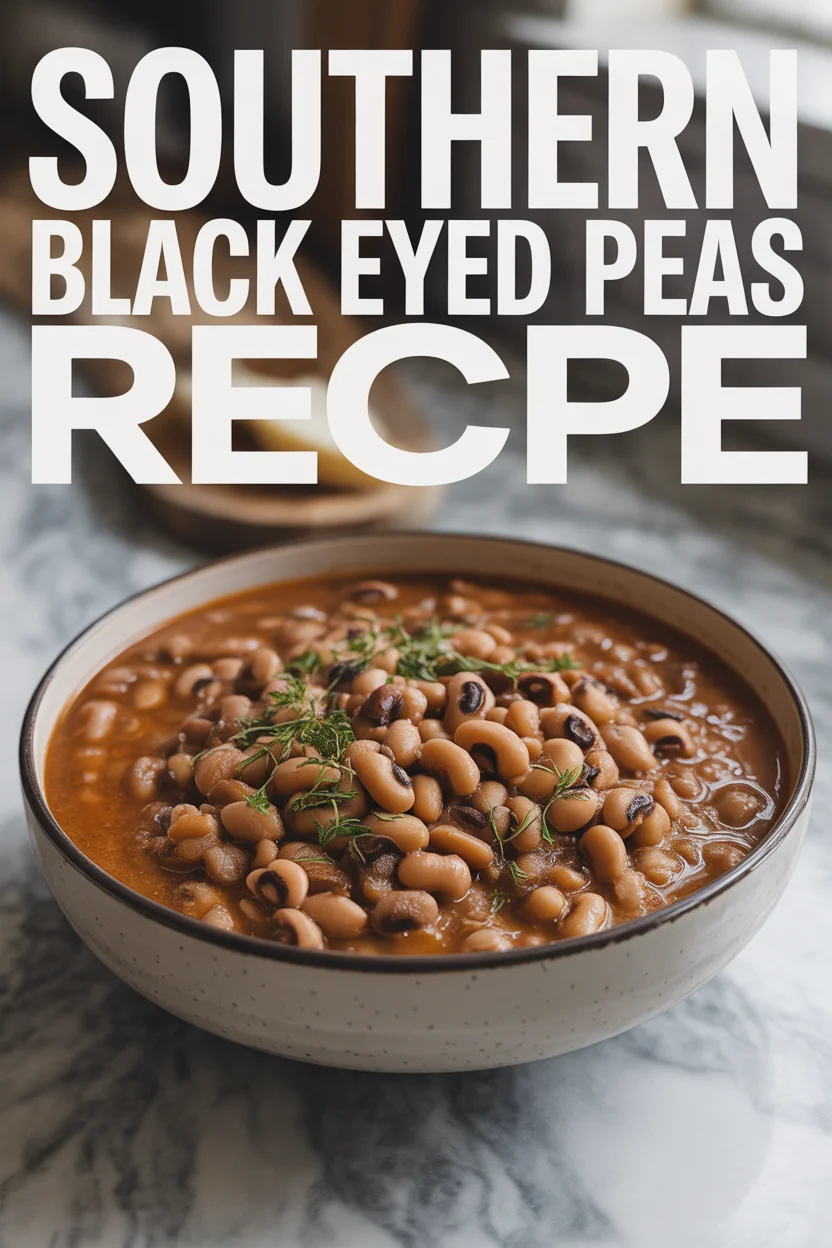

Southern Black-Eyed Peas
Ingredients
Main Ingredients
- 1 lb dried black-eyed peas Rinsed and picked through
- 1 piece smoked ham hock or slab of bacon Adds depth of flavor
- 1 onion, diced
- 2 cloves garlic, smashed
- 4 cups water Enough to cover the peas for cooking
Seasonings
- 1 tbsp salt Adjust to taste
- 1 tsp black pepper Adjust for desired heat
- 1 leaf bay leaf Optional for additional flavor
- to taste hot sauce Add at the end for heat
Instructions
Preparation
- Rinse the black-eyed peas in a colander, picking out any debris and dust.
- You can soak the peas overnight or do a quick soak by boiling them for 5 minutes, letting them sit off the heat for 1 hour, then draining.
Cooking
- In a large pot, add the soaked black-eyed peas, water, ham hock or bacon, diced onion, smashed garlic, salt, and black pepper.
- Bring to a boil, then reduce heat to a simmer. Cook for about 1-1.5 hours, checking occasionally to ensure there’s enough water.
- Taste and adjust seasoning as necessary. If desired, add hot sauce towards the end.
- Remove the ham hock or bacon once tender, strip off the meat, and stir it back into the peas.

